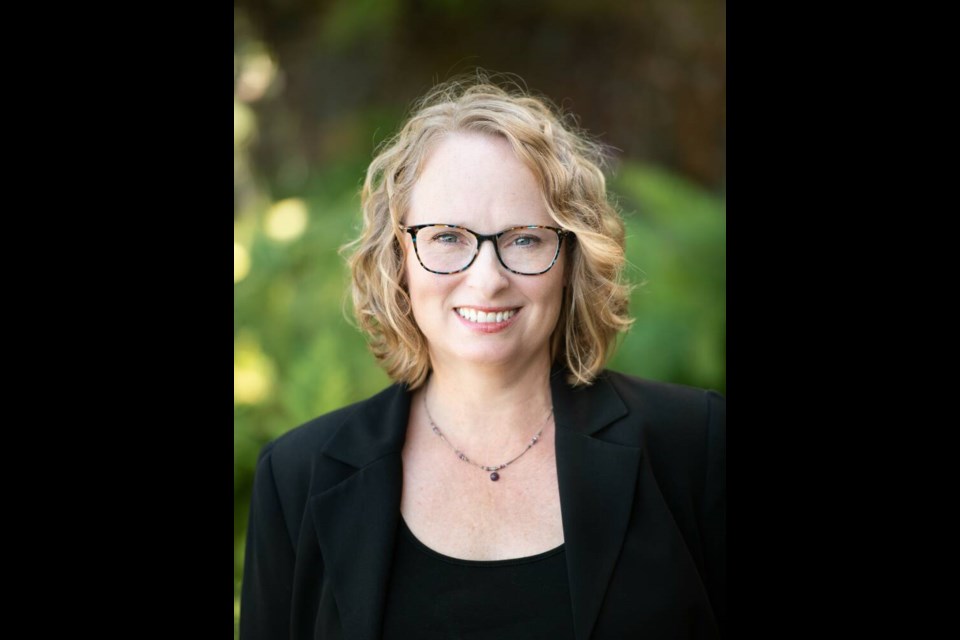Jessica Stanley
Electoral Area A
Website: www.jessicastanley.ca
Facebook: https://www.facebook.com/jessicastanleyareaa
Are you associated with or running as part of a slate? If so, which one?
No
Do you live in the municipality where you are running, and if so, for how long? If not, what is your connection to that community?
Yes, I’ve lived in South Wellington for 5 years.
What is your occupation, and for how long?
School Trustee – 8 years, Farmer - 5 years, & Former Psychologist/University Instructor – 7 years
Tell us about your previous elected and/or community experience.
Jessica Stanley is the Vice-Chair of the Nanaimo Ladysmith Public Schools Board of Education and has served 8 years as a School Trustee. She also Co-Chairs the South Wellington and Area Community Association and has worked actively to build community and transform the closed South Wellington School into a community centre. Jessica has a PhD in Clinical Psychology and runs a small farm where she and her husband raise their 3 children. Jessica Stanley is dedicated to this community and wants to use her skills and experience to protect and maintain the rural character and natural environment of our Area A.
Why are you running? What’s your motivation?
Development pressures, a changing environment, and an aging population put our community at a crossroads. I want to ensure that we have an active representative who will protect the rural integrity, natural environment, and agricultural interests of Area A while making smart, sustainable, community-based decisions about development and liveability. We can no longer passively wait for change and need leaders that find innovative solutions. I believe I offer a good combination of experience working in government, dedication to community, critical thinking skills, and established relationships to represent and advocate for the interests of our community and to achieve results.
What are your top three issues?
Liveability – Road safety and affordability are top concerns in our community. Both need innovative solutions and to not be a “hot potato” tossed around by various authorities.
Sustainability - We need leadership to take the necessary steps to lower greenhouse gas emissions, ensure community preparedness and resilience to extreme weather events, and protect air quality.
Ensuring rural integrity – We all chose a rural lifestyle; this clear community priority should be respected. Development must be within the village areas, give back to the community with amenities, and be consistent with the rural character of Area A.
What’s your vision for your community in 25 years?
Area A is recognized for the value that its natural environment and agriculture provide the region. The thriving food economy ensures the rural integrity of our community and provides good green jobs. The protected Nanaimo River offers an abundance of clean drinking water and fish. Ecoforestry is thriving. Innovative affordable housing solutions are available for all income levels and ages. The Cedar and Cassidy village areas improve liveability by providing services such as grocery stores, cafes, nurse practitioner medical clinics, and community libraries. All of Area A is connected through safe, inter-regional, active and accessible transportation corridors. The strong sense of community connection is maintained through community associations like Cedar Hall and the South Wellington Community Centre – we know our neighbours and help one another.
What’s one “big idea” you have for your community?
My “big idea” is that the RDN needs to strengthen and support the agricultural community and natural environment of Area A to ensure food security. Between climate change and the Ukraine war, we are already experiencing dramatically increased food costs which scientific models predict will get worse. By supporting existing and new farmers and food producers, and creating infrastructure to allow local processing and distribution, we can create a local food system that will become increasingly relied upon by our city population. With rural communities serving as the food source for more densely populated areas, we ensure the rural integrity of our community while addressing food availability and affordability ,and lessen transportation related carbon emissions.



